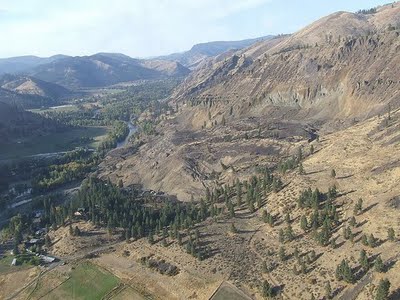16 October 2009
The Naches / Nile River landslide and the role of the quarry
Posted by Dave Petley
“Washington’s Department of Natural Resources warned a Naches, Yakima County, gravel pit four years ago that its operations might be destabilizing a portion of the slope that collapsed onto Highway 410 this week. Records from 2005 show a department geologist noticed a 10-foot-wide fissure between the towering basalt cliffs and a broad talus slope below. The gravel mine appeared to have removed deposits that were buttressing the slope, documents say. “Your surface mining activity may be exacerbating slope instability and, therefore, may be creating a potential hazard to adjacent property and danger to the public health, safety (and) welfare,” says a notice issued to the mine owners in September 2005.”
The article quotes Prof. David Montgomery from the University of Washington, who is undeniably a world class academic geologist:
“It’s definitely premature to rule out the gravel pit as a contributing factor…They were definitely digging at the toe of an active landslide, and that’s a recipe for a slide.”
The article then goes on to note that the Department of Natural Resources (DNR) wrote a letter dated July 2008 that noted that the agency still had not received a monitoring plan.
The image above clearly shows that this is primarily a slump/rotational failure as outlined in my previous post. This is rather beautifully illustrated by the image below, also from Washington State DNR Flickr site. The back-tilting of the trees are a sure-fire sign that the slope has rotated:




 Dave Petley is the Vice-Chancellor of the University of Hull in the United Kingdom. His blog provides commentary and analysis of landslide events occurring worldwide, including the landslides themselves, latest research, and conferences and meetings.
Dave Petley is the Vice-Chancellor of the University of Hull in the United Kingdom. His blog provides commentary and analysis of landslide events occurring worldwide, including the landslides themselves, latest research, and conferences and meetings.
Thank you very much for this blog.